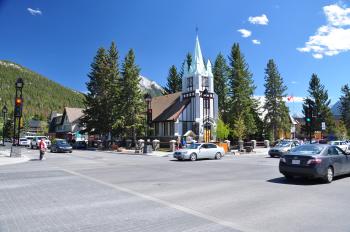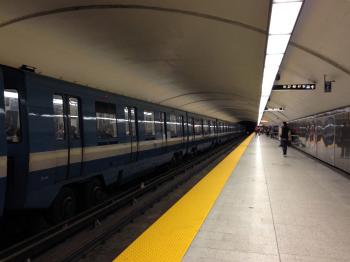Getting Around Montreal
Getting Around Montreal
All City Transport Options: What Locals Use and What’s Best for Tourists
General Overview
Getting around Montreal can be an adventure in itself. This city’s public transport, especially the metro, is efficient and covers a lot of ground, but it definitely has its quirks. For starters, you’ll find that the STM (Société de transport de Montréal) operates the metro and buses seamlessly, running from around 5 a.m. to 1 a.m. on weekdays, with extended hours on weekends. Personally, I sometimes miss the last metro and end up waiting for a late-night bus, which is definitely a lesson learned!What's interesting is the fare structure. A single metro ticket is about $3.50, which is pretty comparable to other cities like New York or London, but then there are these tourist passes (like the 3-day pass for about $19) that can save you a bit if you're planning to hop on and off frequently. Oh, before I forget, don't make the common mistake of assuming the bus and metro costs are the same throughout the day - peak hours can be a bit more congested, and there are off-peak deals too!
Now, one local hack is to keep an eye on the 747 bus that connects the airport to downtown. It runs 24/7, and while it costs the same as a regular metro ride, it avoids the hassle of trying to figure out taxi fares late at night. Trust me, the price difference can be quite ridiculous if you’re not careful!
There are specific routes, like the orange line that takes you through busy areas like Old Montreal, which is absolutely beautiful. My first frustrating experience was trying to find a parking spot near Berri-UQAM during a festival—a total nightmare! On the flip side, I was pleasantly surprised by how efficient the metro is during rush hour; it may be packed, but trains come every few minutes, making the chaos manageable.
As for weather considerations, I’ve learned to always check the forecast before deciding my transport plan. On particularly snowy days, the metros run fine, but buses can be delayed. And when winter hits, locals often throw on "couvre-visages," which are essentially face coverings for the cold, making it easier to navigate the chilly air after stepping out from the warmth of the metro.
In short, the transport in Montreal can take a bit of getting used to, but once you settle in, it's a breeze. Just remember to plan your trips around metro timing, maybe give a shot at the 747 for airport runs, and embrace the beautiful chaos that is the rush hour!
Types of Transport

popular with tourists
Walking in Montreal is a fantastic way to explore the city's vibrant neighborhoods and rich history, as many of the top attractions are grouped closely together. The Old Montreal area, the vibrant Plateau-Mont-Royal, and the expansive Parc Mont-Royal are all easily navigable by foot, allowing you to soak in the local culture at your own pace. Make sure to wear comfortable shoes, as cobblestones can be tricky in Old Montreal, and don't forget to keep your phone charged for maps and photos. For a scenic experience, take the path through La Fontaine Park to reach nearby cafes or markets, which can save you time by avoiding busy streets. Always remain aware of your surroundings, especially in tourist hotspots, to ensure a safe and enjoyable walk.

popular with tourists
The metro in Montreal operates from 5:30 AM to midnight and covers four main lines—Green, Orange, Yellow, and Blue—connecting key tourist areas such as Old Montreal, the Museum of Fine Arts, and Mount Royal. A single fare costs CAD 3.50, but consider purchasing a 3-day pass for CAD 19.50 if you're planning to use the metro frequently, as this offers unlimited travel within that period. For a smooth experience, familiarize yourself with the metro map and plan your routes in advance using the STM mobile app or the website. Remember to keep an eye on your belongings and be aware of your surroundings, especially in crowded stations.

Taxis in Montreal are readily available throughout the city, with a strong presence in tourist-heavy areas such as Old Montreal, the Downtown core, and near major hotels and attractions. The typical cost for a taxi ride starts at around $3.75, with an additional $1.75 per kilometer, plus surcharges for late-night rides and extra passengers. Be sure to pay with cash or credit card, as most taxis accept both, but it’s wise to confirm before getting in. A helpful tip for tourists is to keep small change handy for tipping, as it's customary to round up the fare or give around 10-15%. For added safety, always check that the taxi's meter is running and that the driver is licensed, identifiable by their taxi ID displayed in the vehicle.

The auto transportation in Montreal is quite accessible, with rental agencies located at the airport and throughout the city, making it easy for tourists to hire a vehicle. Expect to pay around $50-$100 per day for a standard rental car, and most agencies accept major credit cards for payment; also, don’t forget to budget for gas, which is typically around CAD $1.50 per liter. A key tip for tourists is to familiarize yourself with the street signs and the fact that many streets have 'one-way' designations, which can be tricky for newcomers. Save time by using the A-720 and A-40 highways to navigate quickly between popular attractions like Old Montreal and Mont Royal. Finally, be cautious of parking restrictions; always check for signs indicating parking fees and limits to avoid tickets.
Here you can learn about all types of transport in Montreal. What transport is available, how to reach tourist attractions and which mode of transport is optimal.
